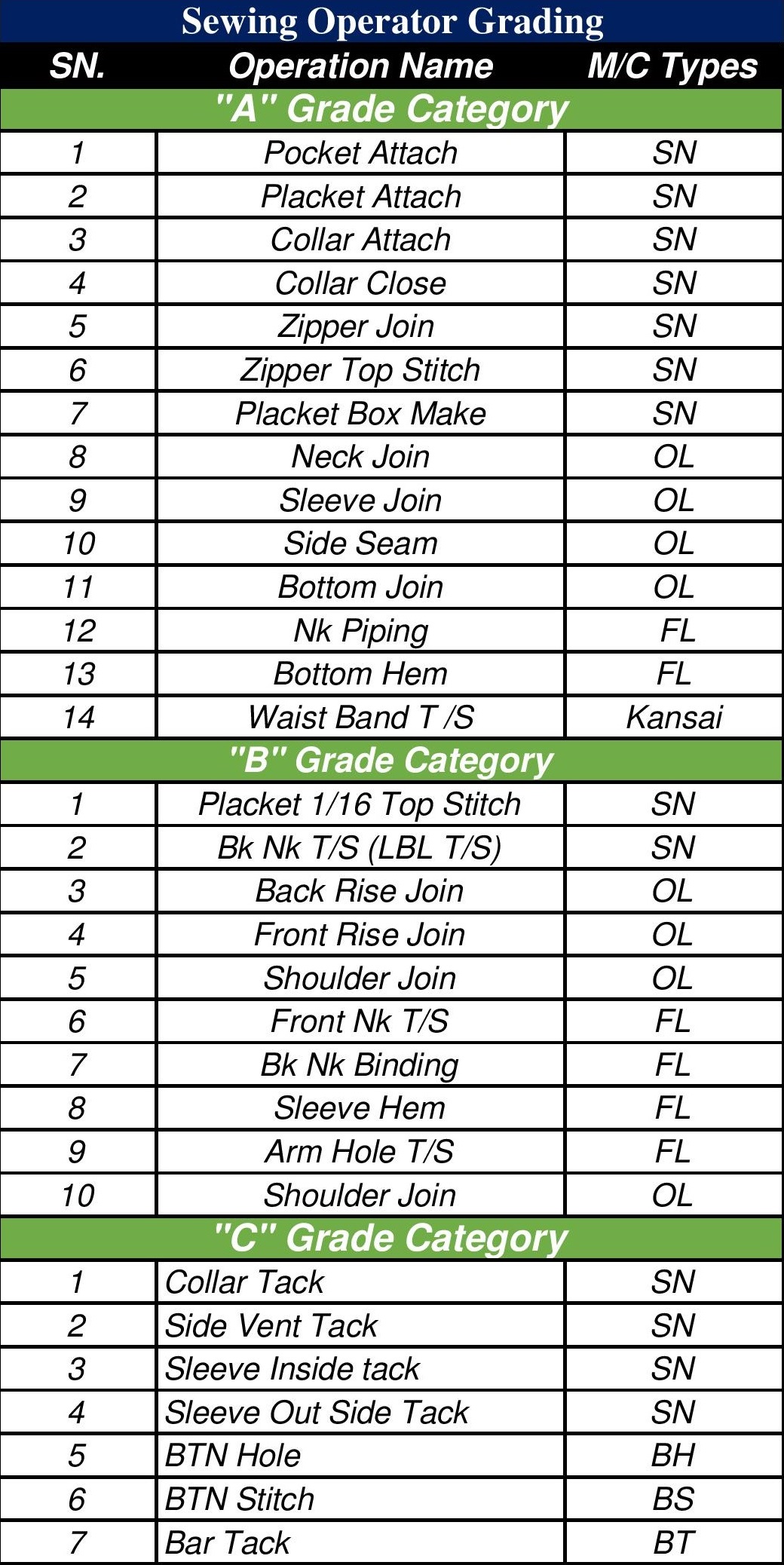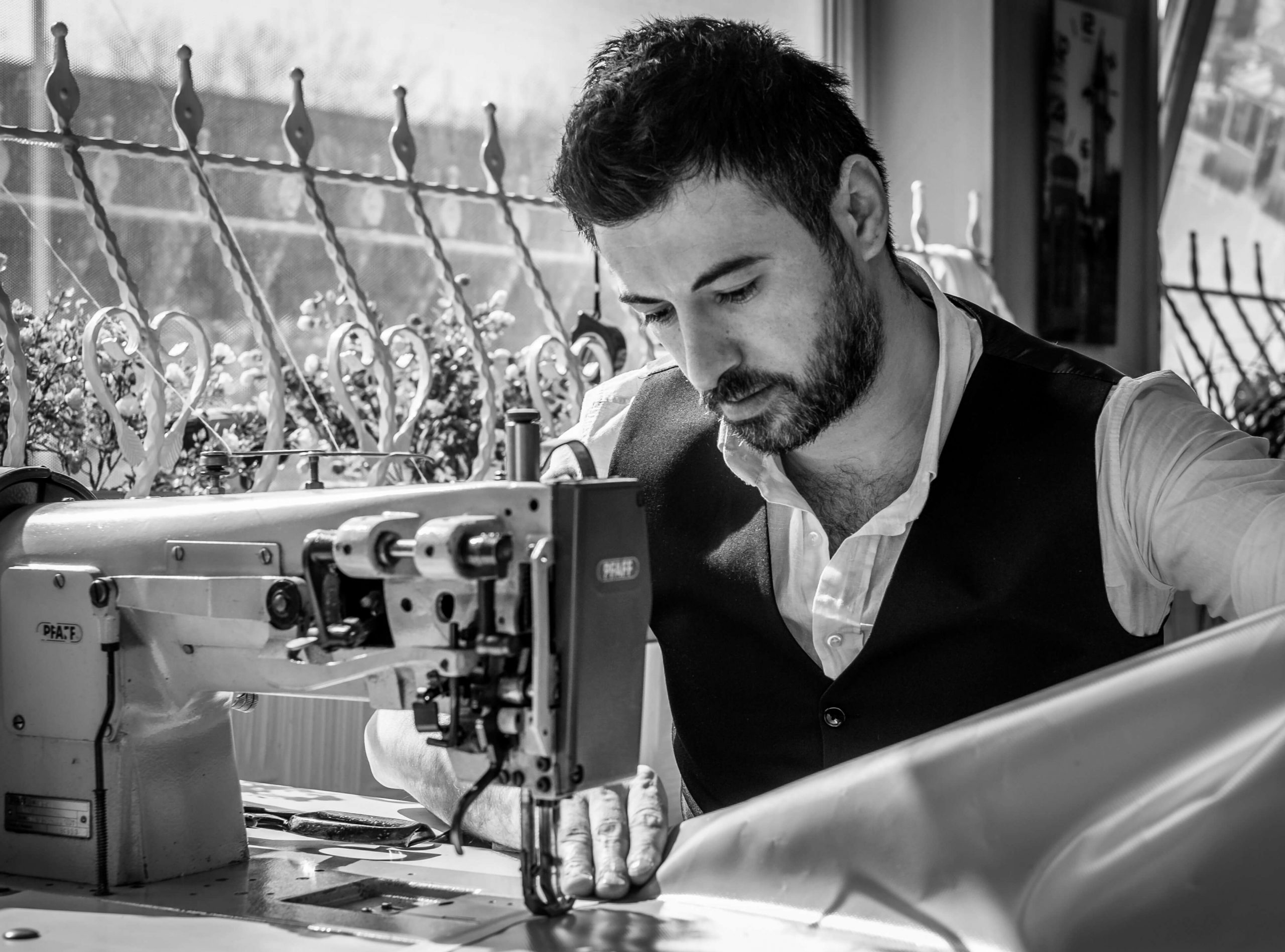Here in this article, you will learn Principles of Lock and Chain Stitch Formation and Its Differences with phase wise details.
The Principles of Lock Stitch Formation
- Lock stitch m/c requires two groups of threads to form a stitch.
- A needle thread that feeds from the top & a lower thread from a bobbin.
- A rotary hook catches the needle thread loop as it passes around the bobbin &
interlocks the two threads. - The lock stitch m/c can be distinguished by the winding device provided for the bottom
thread.

Phases of Lock Stitch Formation
Phase-1: The needle is inserted into the material
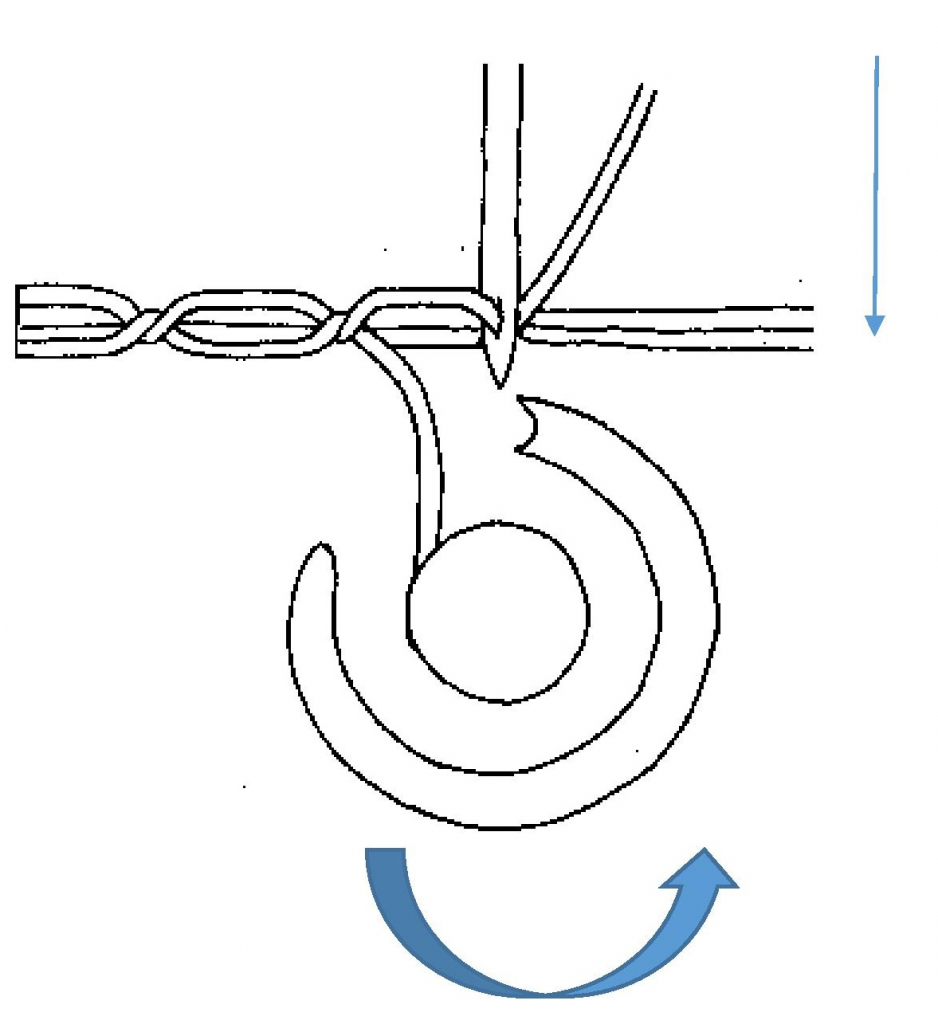
Phase-2: As the needle moves up-wards from its lowest position the needle thread forms a loop which is caught by the point of the hook.

Phase-3: The hook enlarges the needle thread loop.

Phase-4: In this phase, the thread loop is guided around the bottom thread of the spool.
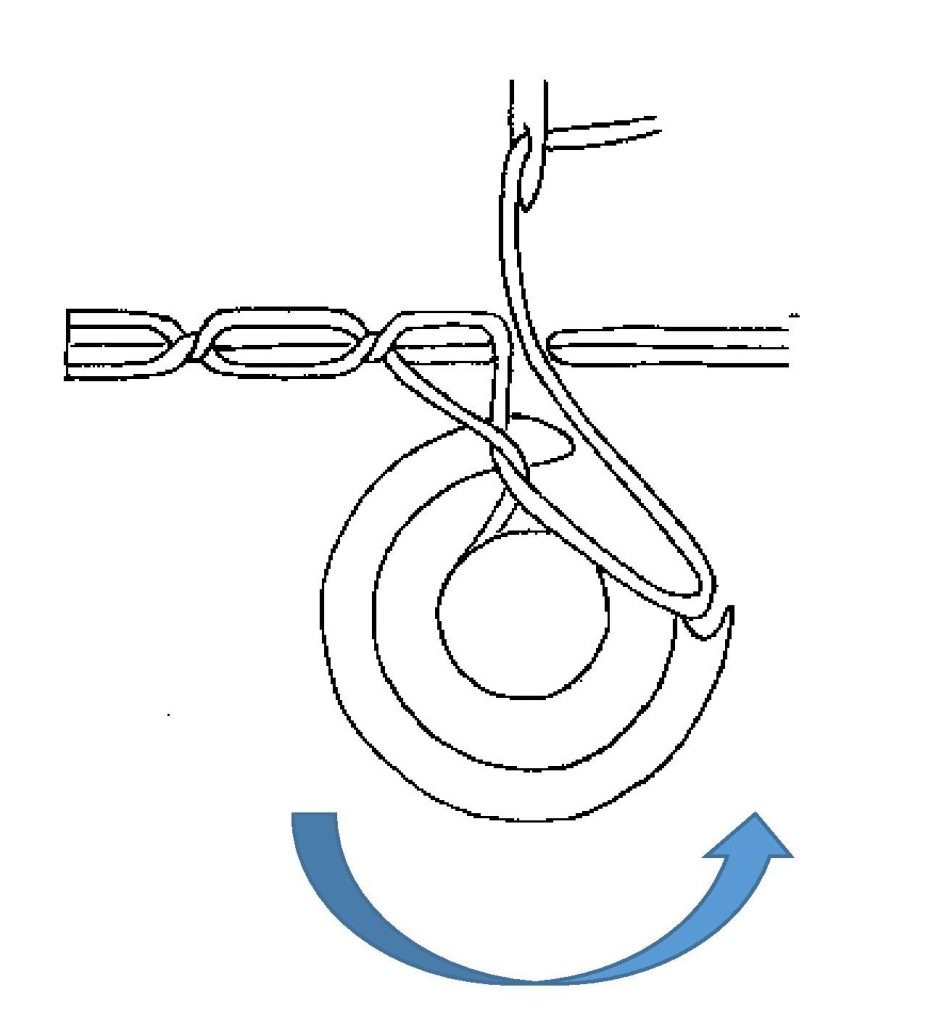
Phase-5: The beginnings of interlacing will be done in this phase.
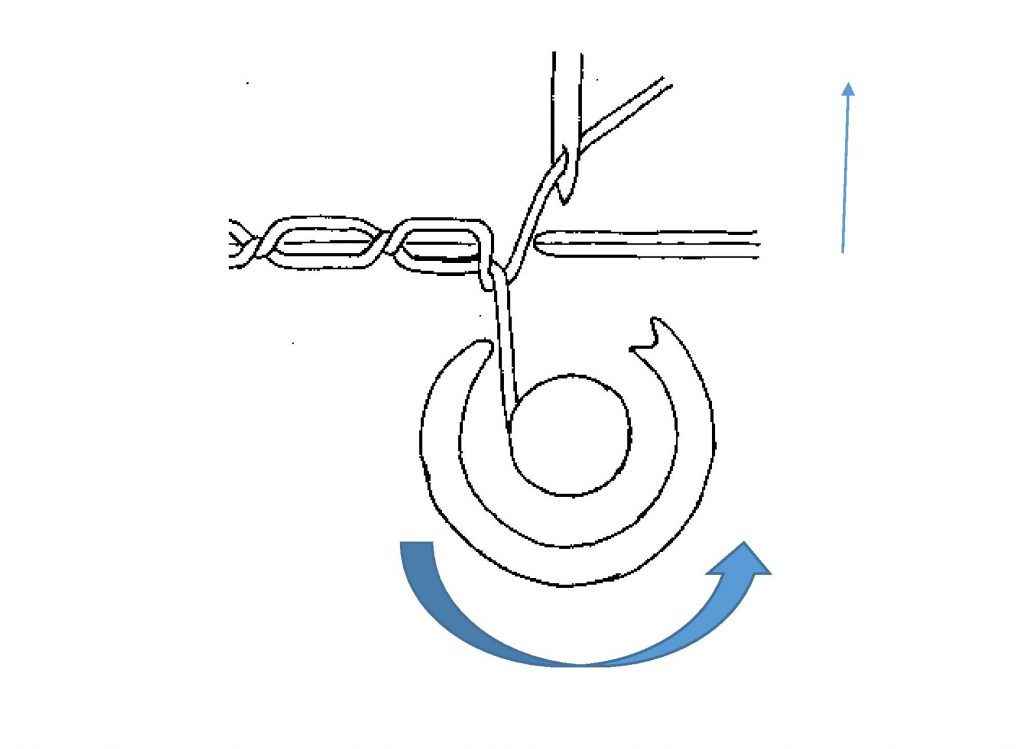
Principles of Chain Stitch Formation
Phase-1:
- The needle is entered through the fabric with the thread & reaches to its lowest position.
- Needle contain old loop around its blade
- When needle moves on upward there will be the formation of a new loop.
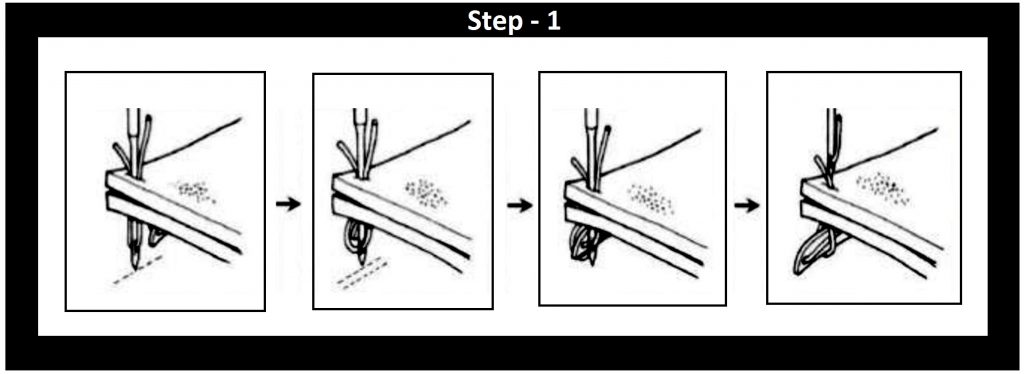
Phase-2:
- The new loop is caught by the looper (above the needle eye below the old loop)
- The needle moves upward
- The old loop is cast off from the needle blade and slides on the base of the new loop, which is still held by the looper.
- Between the new and old loop, an interlacement is to be formed under the fabric
- In that time fabric is also moved one stitch forward due to the feed dog mechanism.

Phase-3:
- The looper enlarges the new loop so that when needle again entered through the fabric it passes through the loop.
- Then the looper leaves the loop, which held on the needle blade.
- This loop now becomes the old loop.
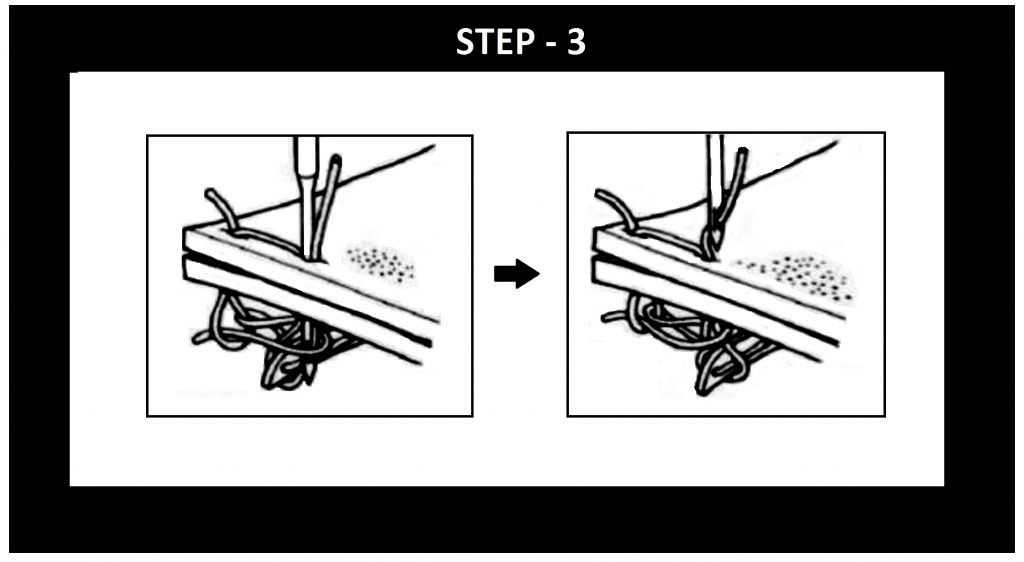
Difference Between Chain Stitch and Lock Stitch
| Chain Stitch | Lock Stitch |
| Stitches are formed by two or m regroups of threads, needle thread & looper thread. | There will be at least two types of threads, one is needle thread and other is bobbin thread. |
| The Threads are bound together by interlacing and interloping. | The Threads are only bound by interlacing. |
| Looks like lock stitch at the top side and double chain at under. | The visibility look of a lock stitch is the same on both sides of the fabric. |
| Strength is higher than look stitch. | Lower strength than chain stitch. |
| Possibilities of seam pucker formation are less compare to lock stitch. | Possibilities of seam pucker are more than chain stitch. |
| Extensibilities is 30% | Same, sometimes less than chain stitch. |
| No need of back tacking at finishing end, but secured by one (cm) thread at finishing the end. | Stitches are secured by back tacking at the starting and finishing the end. |
| m/c speed 8000 spm (stitch per min) | m/c speed 6000 spm. |
| Thread consumption is high. | Thread consumption is less. |
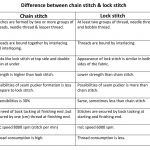
Amarta Sarkar
B.Sc. in Textile Engineering (Major in Apparel Manufacturing Technology)
(BUBT)
EMBA (Studying) (JnU)
Email: [email protected]


